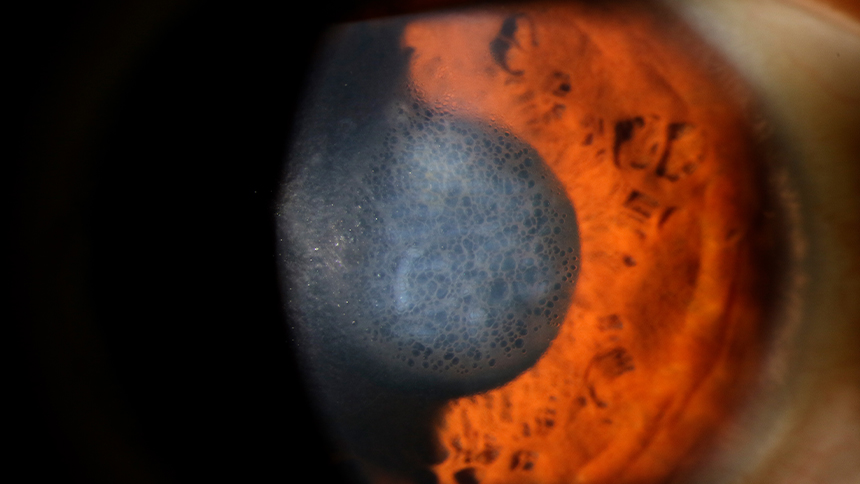Diseases
Corneal Dystrophy

Definition
Corneal dystrophy is a group of more than twenty rare genetic eye disorders. In most cases, a defect in certain genes causes an abnormal accumulation of proteins, lipids or even cholesterol to be deposited in different layers of the cornea, the outermost structure of the eye. The result is a change in its transparency. Corneal dystrophies often affect both eyes, progress slowly and can occur in different members of the same family. Please note: rubbing the eyes, exposure to UV light or poor adaptation to contact lenses can in some cases aggravate the dystrophy.
Symptoms
Depending on the type of corneal dystrophy, symptoms may appear from birth, in adolescence or around the age of 45-55, as in the case of Fuchs dystrophy, one of the most common. Damage to the layers of the cornea can lead to blurred vision. If the abnormal deposits are located in the superficial layer, this can also be painful and cause watering, with a sensation of a foreign body. If the damage is in the endothelium, the water bubbles (Fig. 1) may cause irritation or intense pain. Conversely, some people experience no symptoms at all.
Treatment
In the event of pain, saline drops or ointments can be applied to remove water from the cornea or a lubricant to reduce friction. If the pain is intense due to erosion of the epithelium, soft contact lenses can be used to protect the cornea until the epithelium heals. If these measures are not enough, and depending on the type of dystrophy or if vision deteriorates, a corneal transplant or laser operation may be necessary. If there are no symptoms, no treatment is required. All that is required is to monitor the progression of the disease.
Source : Bien vu!
Content reviewed and checked on 19.12.2024.

